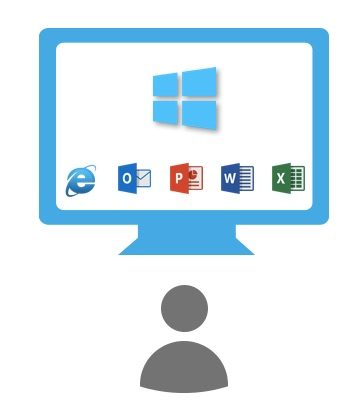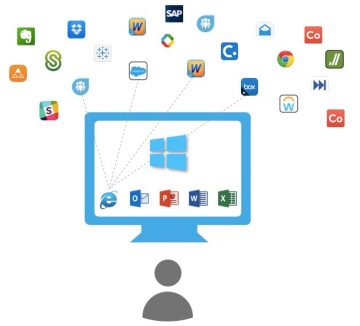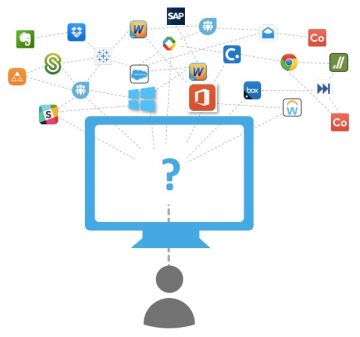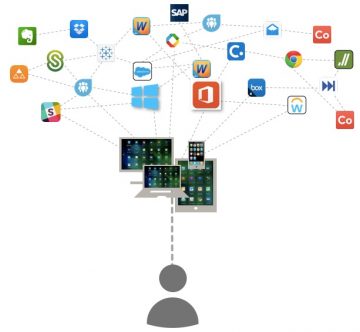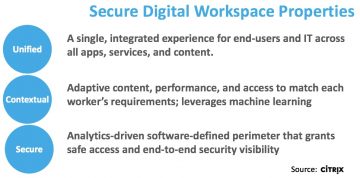Why marketers fail to focus on industry-specific buyers

I was recently speaking with 2 CEOs of leading-edge technology companies about how they go-to-market. One is a brilliant open-source software firm, the other a groundbreaking virtual networking startup.
When I asked them what their industry marketing approach would be, each essentially said “I don't need that – we have a horizontal technology.”
My reaction was one of surprise. Were their technologies applicable cross-industry? Yes. Will the companies continue to grow? Absolutely. But after years of my own leading product- and corporate marketing teams, I’ve found that it will take longer for each company to reach their full potential and market penetration if they don’t first adjust their go-to-market approach to industry-focused buyers. I’ve blogged about this in the past as it applied to Service Providers, and how they can also use Verticalization to reap increased profits.
Avoiding technology marketing gaffes
Speaking as a (recovering) technologist I can say that engineers and technical leaders are unbelievably proud of their accomplishments... so proud in fact, that to them, their technologies ought to speak for themselves.
The problem is, most customers aren’t buying technologies... they’re shopping for solutions to needs that they have in their business.
The 4 biggest Go-to-Market errors I typically see are
- “Build it and they will come” - A dangerous tech mentality that really only succeeds in rare, industry-wide transformations. How many great ideas have you seen flop?
- “It’s good for everyone” – Ironically, this is a myopic view. Beware of the fact that while the idea probably good for everyone, it’s probably not great for anyone. Actual (or perceived) focus on segments is critical.
- “The technology speaks for itself” – This might be true. But the issue is that humans search for (and buy) solutions to problems, not for technologies
- “Just see how it works” – Perhaps illustrating functionality helps in the buying process (inside the “marketing funnel”) is cool. But talking about how a technology works high in the funnel doesn’t accomplish helping get the initial attention from a prospective buyer.
Instead, think about how buyers think
The takeaway is that buyers rarely look for a generic technology... and even when they do, they want to know (and see) how it’s applied to their specific market, industry, or company size. They want to be assured that it’s the right solution, and one that’s been successfully tailored to other companies just like theirs.
- Buyers think about solutions specific to their immediate needs and their problems. And each buyer thinks (often justifiably) that their problem is unique to their type of business. So solutions and descriptions have to be tailored to sounding industry-unique.
- Buyers identify with, search for, and buy, solutions that align with their title, industry and company type. So your solution personas need to appeal to these specific attributes and use these specific keywords
- Most buyer agents prefer solutions that appear to be fit-for-use and/or ready-to-use, rather than generic “engines” that might imply wasteful customization. So it’s critical to illustrate how “finished-goods” the solution is for each industry solution.
What to do now – Even for the most “horizontal” technology
- Know your customers and know your buyers
understand the keywords they use in their industry, what terms resonate with them, especially terms that are industry-specific. Also, understand the specific problems they’re solving for... Even a small tweak to your “horizontal” solution description that uses terminology in the selected industry or specific persona will get an added resonance with a buyer. - Emphasize industry-specificity
Every industry has unique language and terminology – so use them. Plus, most industries have specific forms of legal constraints, compliance requirements, and/or security approaches. Learn these and explain – in industry terms – how your horizontal technology maps to each on, individually. You may need to hire someone from these industries to help you understand them and craft unique messages. - Highlight use-cases!
Not every buyer can envision how your technology applies to them, how critical it might be, or how valuable it is. Make sure you illustrate a broad set of use-cases that highlight individual industries. And once again, ensure you’re using industry-specific terminology, value propositions, and personas as you tell the use-case stories. - You can differentiate with your channel
If you sell indirectly (via resellers, system integrators or distributors) often your channel partners can take your technology and adapt it to specific markets, buyers or geographies. This is often a win-win relationship: You get a differentiated product that’s adapted for a market or use-case, and your partners get an opportunity to add value and increase revenue. - Other creative ways to differentiate
There are surprisingly simple ways you can differentiate a basic technology in the market such that it has greater appeal to specific audiences. For example, consider how you might address a small/medium/large customer – perhaps with slightly reduced functionality and associated pricing for smaller or entry-level customers. - Organize your customers by industry
Every time you get a new customer “success story”, make sure you categorize it in an industry category. Rest assure, when buyers come to your website, they’ll instantly gravitate to verticals they play in... and even want to see what competitors of theirs have done with your products.
Back to where we began...
I’ve taken a shot at using my own advice – and applying it to the two CEO examples that I experienced earlier. I hope you find these interesting and thought-provoking for your own products:
Vertical marketing advice for the Open-Source firm....
- Can re-categorize their ~ 400 public customers by vertical - and making the list searchable
- Illustrate integrations with major industry-specific enterprise apps in ways that resonate with buyers of those products; Also, partner tightly with those app vendors.
- Emphasize vertical industry use-cases (i.e. they already cite Banking) and how each industry is each deriving value differently from the product
- Attend and/or secure speaking opportunities at core vertical-industry trade events where they have solid use cases and success stories
- Team with value-add technology partners who further customize the open-source platform.
Vertical marketing advice for the Networking technology firm
- Create a content marketing initiative focusing on solutions and use cases, not just on “how it works”
- Assess and expand upon ROI and benefit analyses that are specific to different industries – in their terms and cost/benefit models
- Differentiate the offering with alternative pricing models, such as dedicated instances vs. peak load “burst” instances
- Build off of the vertical messages that the adjacent competitors use, illustrating why this new technology is better for each industry.


